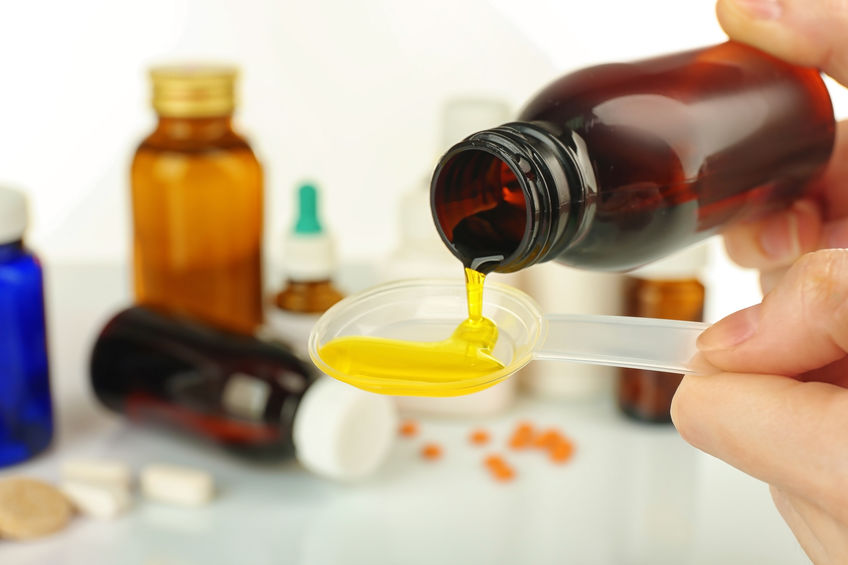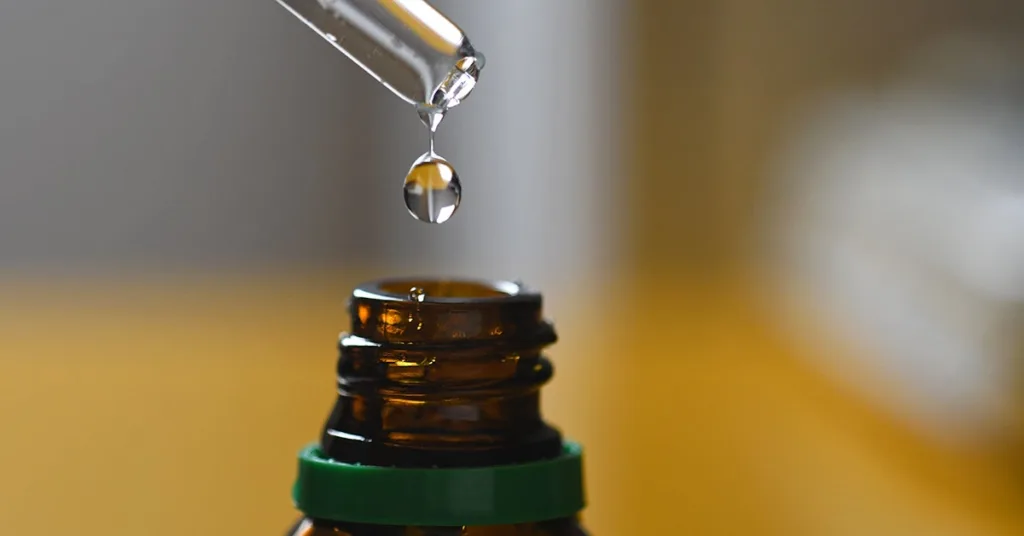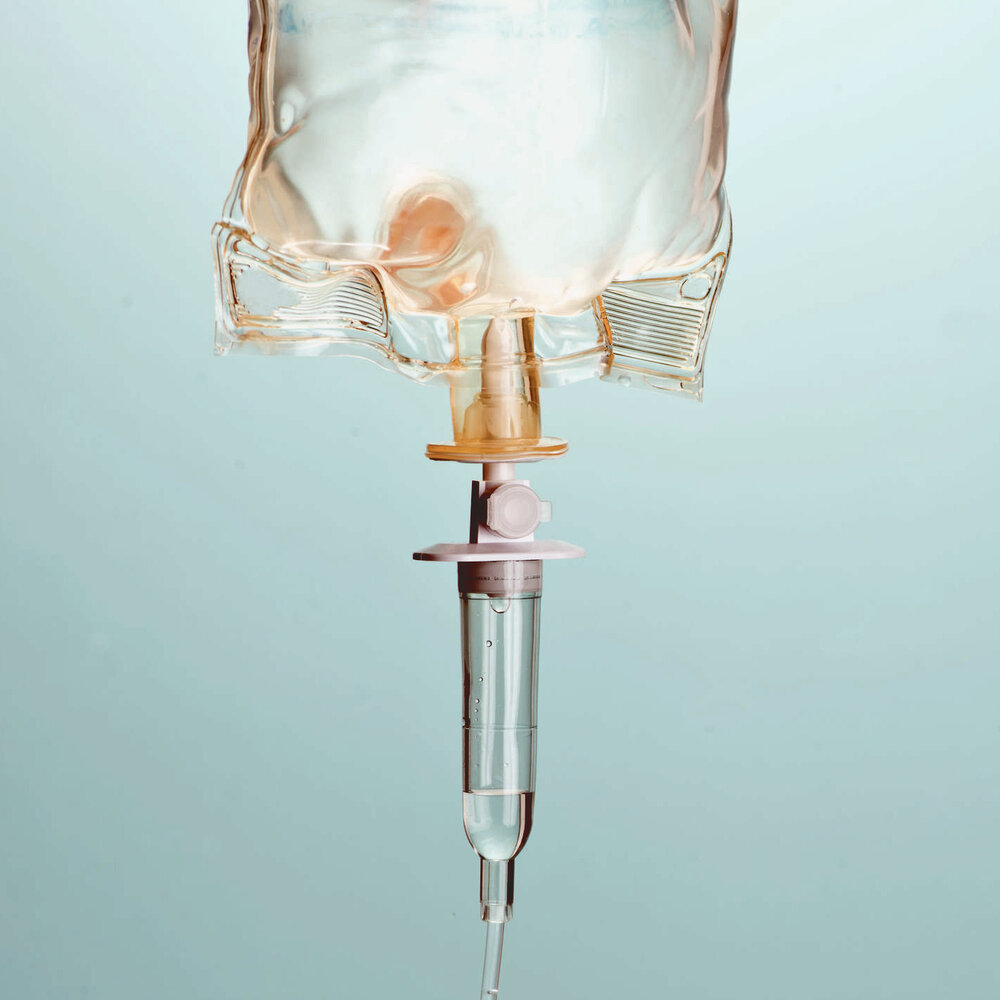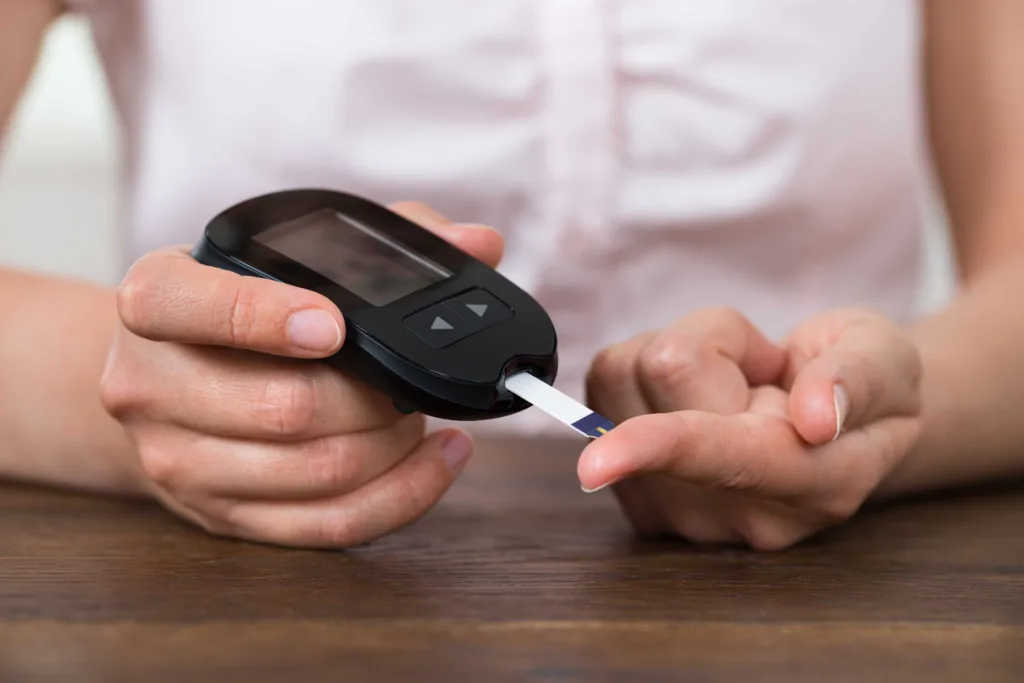If you’ve ever had to measure medication or administer it to someone, you may have come across the term gtt to ml. This measurement is used to convert the number of drops (gtt) into the corresponding volume in milliliters (ml). Understanding this conversion can be crucial for accurate dosing and administration of medication.
First, it’s important to understand that there is no universal standard for the size of a drop. Drops can vary in size depending on the type of medication, the method of administration, and even the person administering the medication. This can lead to inconsistencies in dosing if drops are relied upon as the sole method of measurement.
To address this issue, pharmacists have moved towards using metric measurements, with a standard drop size of 0.05 ml (50 μL). This allows for more precise dosing and reduces the risk of errors due to variations in drop size.
When converting gtt to ml, it’s important to know the size of the macro set being used. Macro sets are typically either 10, 15, or 20 drops to make 1 ml. For example, if a medication is ordered to be given at a rate of 30 gtt/min using a 20 gtt/mL macro set, the calculation would be as follows:
30 gtt/min ÷ 20 gtt/mL = 1.5 mL/min
If a microdrip set is being used, the calculation would be different, as microdrip sets produce smaller drops. Microdrip sets are typically used for children and infants, or for medications that require precise flow rates.
It’s also important to note that gtt to ml conversions are not alwas precise, as variations in drop size can still occur. Therefore, it’s always important to double-check dosages and measurements to ensure accuracy.
Understanding the conversion from gtt to ml is important for accurate dosing and administration of medication. By using a standard drop size of 0.05 ml and knowing the size of the macro or microdrip set being used, healthcare professionals can ensure more precise dosages and reduce the risk of errors.
How Many Milliliters Are in a Drop?
Pharmacists have made the switch to the metric system for measuring medication, which has resulted in a change in the measurement of drops. In the metric system, one drop is now equivalent to exatly 0.05 mL, or 50 microliters. This means that there are 20 drops in one milliliter. The use of metric measurements has improved accuracy and consistency in medication dosages, as it allows for more precise calculations and reduces the risk of errors due to variations in drop size. It is important for healthcare professionals and patients to be aware of this change in measurement to ensure proper dosing and administration of medications.

How Many Drops Are in One GTT?
The medical field often uses the abbreviation “GTT” to represent the word “drop,” which is a unit of measurement for flow rate. One GTT, or one drop, is a very small amount of liquid that is commonly used for medications or IV fluids. The number of drops in one GTT depends on the size of the dropper or the equipment used to administer the liquid.
In the United States, the most common dropper size is a 15-drop/mL dropper, which means that there are 15 drops in one milliliter of liquid. Therefore, one GTT wold be equal to 0.067 mL (or 1/15th of a milliliter).
In some cases, the flow rate may be expressed in drops per minute (GTT/min) instead of drops per second (GTT/sec). To convert between the two units, it’s important to note that there are 60 seconds in one minute. Therefore, if the flow rate is given in GTT/sec, you can multiply that value by 60 to get the corresponding value in GTT/min.
For example, if the flow rate is 0.017 GTT/sec, then the equivalent flow rate in GTT/min would be 1 GTT/min (since 0.017 x 60 = 1).
The exact number of drops in one GTT depends on the size of the dropper or equipment used. However, in the United States, a 15-drop/mL dropper is commonly used, which means that one GTT is equal to 0.067 mL. Additionally, to convert between GTT/sec and GTT/min, you can simply multiply the GTT/sec value by 60.
How Many Drops Are Contained in 1 ML of Medicine?
When it comes to measuring liquid medication, drops are commonly used as a unit of measurement. The number of drops in 1 mL of medicine can vary depending on the dropper or the size of the drops. However, most macro sets, which are commonly used in medical settings, are designed to make 1 mL of medication with either 10, 15 or 20 drops.
It’s important to note that not all droppers are created equal, and the size of drops can vary from one dropper to another. For instance, a dropper with a larger opening may produce bigger drops, wile a dropper with a smaller opening may produce smaller drops. This is why it’s important to use the dropper that comes with the medication or to follow the instructions provided by the healthcare provider.
To ensure accuracy when measuring medication, it’s recommended to hold the dropper vertically and allow the drops to fall freely into the container. It’s also important to avoid squeezing the dropper too hard or too quickly, as this can cause the drops to come out unevenly.
While the number of drops in 1 mL of medicine can vary, most macro sets are designed to make 1 mL of medication with either 10, 15 or 20 drops. It’s important to use the dropper that comes with the medication and to follow the instructions provided by the healthcare provider to ensure accuracy when measuring medication.
What Does the Abbreviation ’10 GTT’ Stand For?
In medical settings, it is common to use drip sets to regulate the flow rate of intravenous fluids or medications. These drip sets are calibrated to deliver a specific number of drops per milliliter of fluid. The number of drops per milliliter is denoted by the abbreviation “GTT.”
In the case of a 10 GTT tubing, this means that each drop that falls from the drip set is equivalent to 0.1 milliliters (mL) of fluid. This is because 10 drops are required to equal one milliliter.
It is important to note that diffeent drip sets have different drop sizes. For example, microdrip tubing has a smaller drop size than macrodrip tubing. Macro-drip tubing is typically available in 10, 15, or 20 GTT/mL, while micro-drip tubing is typically calibrated to deliver 60 GTT/mL.
Knowing the GTT of a drip set is important for healthcare providers because it allows them to accurately calculate the flow rate of intravenous fluids or medications. By counting the number of drops that fall during a specific time period, they can determine whether the rate of administration is appropriate for the patient’s needs.
Calculating GTT ML
Calculating GTT mL involves determining the number of drops per minute (gtt/min) that shuld be administered to a patient based on their prescribed medication dosage. To calculate GTT mL, you will need to know the flow rate of the IV, the prescribed medication dosage in mL per hour, and the drop factor of the administration set being used.
The formula for calculating GTT mL is:
ML/hr X drop factor = gtt/min
To use this formula, first determine the prescribed medication dosage in mL per hour. Then, multiply this value by the drop factor of the administration set being used. For example, if the prescribed medication dosage is 100 mL per hour and the drop factor is 20 drops per milliliter, the calculation would be:
100 mL/hr X 20 gtt/mL = 2000 gtt/hr
Divide this value by 60 to determine the number of drops per minute:
2000 gtt/hr ÷ 60 min/hr = 33.33 gtt/min
Therefore, the patient would need to receive 33.33 drops per minute to receive the prescribed medication dosage of 100 mL per hour using an administration set with a drop factor of 20 drops per milliliter.

Does the Conversion of 10 Drops Equal 1 ML?
10 drops equal 1 mL. The conversion beteen drops and milliliters is commonly used in medicine and cooking. Drops are a unit of volume measurement that vary in size depending on the liquid being measured and the dropper used. Milliliters, on the other hand, are a standard unit of volume measurement in the metric system. To convert from drops to milliliters, you can refer to a conversion table or use a formula. For example, if you know that 1 mL equals 20 drops, you can divide the number of drops by 20 to get the equivalent volume in milliliters. It is important to note that the conversion factor between drops and milliliters may vary depending on the liquid being measured and the dropper used, so it is always best to refer to the specific instructions or guidelines provided.
What is the Meaning of 1 GTT?
In the realm of medicine, 1 GTT refers to one drop of a liquid medication. The abbreviation GTT is derived from the Latin word “guttae,” wich means drops. This term is commonly used in prescription writing as a shorthand method to indicate the number of drops to be administered to a patient. It is important to note that the size of a drop can vary depending on the medication and the dropper used, so it is crucial to follow the prescribing physician’s instructions carefully. In some cases, healthcare providers may also use other measurements, such as milliliters, to specify the dosage of a medication. Therefore, it is essential to clarify any dosing questions with a healthcare professional to ensure accurate and safe administration of medication.
What Does GTT Stand For?
In the medical field, GTT stands for “drops per minute” and is typically used when administering medication intravenously. The number of drops per minute is a crucial factor in ensuring that the correct dosage of medication is being delivered to the patient. The exact conversion rate from GTT to othr units of measurement, such as milliliters per hour, will depend on several factors, including the size of the dropper, the viscosity of the medication, and the flow rate of the infusion pump. However, as a general rule, 1 GTT is equal to approximately 0.05 milliliters or 1/20th of a milliliter. Therefore, if a patient is receiving medication at a rate of 60 GTT per minute, this would be equivalent to a flow rate of approximately 3 milliliters per hour. It is important to note that these conversion rates may vary depending on the specific medication being used and the instructions provided by the prescribing physician or pharmacist.
Understanding GTT Drip Rate
GTT drip rate refers to the rate at which a medication is being administered through an intravenous (IV) drip. GTT, an abbreviation for “guttae,” which is a Latin word for “drop,” is commonly used in the field of medicine to indicte the administration of medication drops. The GTT drip rate is the number of drops of medication that are delivered per minute through an IV drip. The rate at which the medication is delivered is determined by the healthcare provider based on the patient’s condition, weight, and other factors. The GTT drip rate can be adjusted by changing the flow rate of the IV drip, which is typically measured in milliliters per hour (ml/hr). It is important to monitor the GTT drip rate closely to ensure that the patient receives the correct dosage of medication and to avoid adverse effects. In some cases, the GTT drip rate may need to be adjusted to maintain the desired therapeutic effect or to manage side effects. It is recommended to follow the healthcare provider’s instructions carefully when administering medication through an IV drip and to report any concerns or issues promptly.

Conversion of 1ml to Drops
Pharmacists have conducted various experiments to determine the number of drops in 1 ml of liquid. Based on their findings, it can be concluded that on average, there are 20 drops in 1 ml of liquid. Therefore, it can be said that 1 ml is equal to 20 drops.
It is important to note that the number of drops in 1 ml may vary depending on the type of liquid being measured and the size of the dropper. However, the average number of drops per ml is generally considered to be 20.
It is also worth mentioning that the volume of a single drop can be calculated usig the ratio of the volume of liquid to the number of drops. In the case of 1 ml and 20 drops, the volume of a single drop can be calculated as 0.05 ml per drop.
Pharmacists have determined that 1 ml is equal to an average of 20 drops, with each drop being approximately 0.05 ml in volume.
Converting 10 ML to Drops
In the world of medication, it is crucial to have precise measurements to ensure accurate dosages. In the case of eye drops, the standard measurement is 0.05 ml per drop. Therefore, in 10 ml of medication, thre would be a total of 200 drops. It’s essential to note that this measurement may vary depending on the type of medication and the dropper’s design. However, for most eye drops, 10 ml would provide around 200 doses, making it a popular size for prescriptions.
To break it down further, here is a quick reference guide for the number of drops in different volumes of medication:
– 1 ml = 20 drops
– 5 ml = 100 drops
– 10 ml = 200 drops
– 15 ml = 300 drops
– 20 ml = 400 drops
It’s important to follow the dosage instructions provided by your healthcare provider or pharmacist to ensure you are using the correct amount of medication. Overdosing or underdosing can have adverse effects on your health and may impact the effectiveness of the treatment.
Conversion of 10 mL to Drops
When it comes to measuring liquids, it’s essential to know the equivalent number of drops for a specific volume. In the case of 10 milliliters (ml), it’s useful to understand that each milliliter contains approximately 12 drops. This means that 10 ml has a total of 120 drops.
It’s worth noting that the number of drops can vary slightly depending on the type of liquid, the viscosity, and the dropper’s size. Therefore, it’s essential to follow the instructions provided with the dropper or consult a reliable source for accurate measurements.
If you need to use 10 ml of liquid and don’t have a dropper available, you can use a measuring spoon or cup to achieve the desired amount. Alternatively, some droppers come with markings that indicate the number of drops for a given volume, allowing for precise measurements.
10 ml is equivalent to 120 drops, but it’s crucial to cnsider the liquid’s characteristics and the dropper size for accurate measurements.
What is 75g GTT?
The 75-gram glucose tolerance test (GTT) is a diagnostic test that is commonly used to evaluate how well your body processes glucose. It is also knwn as the oral glucose tolerance test (OGTT), as it involves drinking a liquid containing 75 grams of glucose.
The test is typically carried out after an overnight fast, during which time you will not have eaten or drunk anything. Before the test begins, a sample of your blood will be taken to measure your fasting blood sugar level.
After this, you will be asked to drink the glucose solution. Then, blood samples will be taken at regular intervals (usually every 30 minutes) over the course of two hours. These samples will be used to measure your blood glucose levels, which will help to determine how efficiently your body is able to process glucose.
The results of the 75-gram GTT can be used to diagnose a number of conditions, including diabetes, gestational diabetes (a type of diabetes that occurs during pregnancy), and impaired glucose tolerance (a condition in which your body is not able to process glucose as efficiently as it should).
It is important to note that the 75-gram GTT is a medical test that should only be carried out under the supervision of a healthcare professional. If you are concerned about your blood sugar levels or have any other health concerns, it is important to speak to your doctor.
Normal Results of a One-Hour Glucose Tolerance Test
A normal 1-hour GTT result is a blood sugar level that is equal to or less than 140 mg/dL (7.8 mmol/L) one hour after drinking a glucose solution. GTT stands for glucose tolerance test, which is used to diagnose gestational diabetes. The test involves drinking a glucose solution, waiting for a designated amount of time, and then having blood drawn to measure blood sugar levels.
If your 1-hour GTT result is within the normal range, it means that you do not have gestational diabetes. However, if your blood sugar levels are higher than 140 mg/dL (7.8 mmol/L), it may indicate that you have gestational diabetes and further testing is needed to confirm the diagnosis.
It is important to note that the normal range for a 1-hour GTT can vary depending on the specific laboratory and testing protocol used. Therefore, it is always best to consult with your healthcare provider about your specific test results and what they mean for your pregnancy.
A normal 1-hour GTT result is a blood sugar level that is equal to or less than 140 mg/dL (7.8 mmol/L) one hour after drinking a glucose solution, which inicates that you do not have gestational diabetes.
The Benefits of a Two-Hour Glucose Tolerance Test
The 2-hour Glucose Tolerance Test (GTT) is a medical test used to measure how well your body processes glucose (sugar). The test is typically conducted to screen and diagnose Type 2 Diabetes or monitor the blood sugar levels of people already diagnosed with diabetes.
During the test, the patient fasts for 8 to 12 hours before the test. Then, the patient drinks a sugary drink containing a known amount of glucose. After drinking the glucose solution, the patient’s blood sugar levels are measured at regular intervals, typically every 30 minutes to 1 hour, over a period of 2 hours.
The results of the 2-hour GTT are used to determine how effectively the patient’s body is able to process glucose. Normal results show that the patient’s blood sugar levels return to normal levels within two hours aftr ingestion of the glucose solution. Abnormal results may indicate that the patient has impaired glucose tolerance or diabetes.
Some reasons why a 2-hour GTT may be ordered include:
– Screening for diabetes in people who are at high risk of developing the condition
– Diagnosis of Type 2 Diabetes or gestational diabetes in pregnant women
– Monitoring the blood sugar levels of people already diagnosed with diabetes
It is important to note that the 2-hour GTT is just one of many tests that doctors use to diagnose diabetes. Other tests may include a fasting blood sugar test, a hemoglobin A1C test, or a random blood sugar test.
The 2-hour GTT is a valuable tool for monitoring blood sugar levels and diagnosing diabetes. If you are concerned about your blood sugar levels, talk to your doctor about whether a GTT is right for you.

Conclusion
After exploring the world of drops and milliliters, it is clear that the conversion from gtt to ml is an essential skill for pharmacists and medical professionals. With the standardization of metric measurements, we now know that 20 drops is equivalent to 1 ml, with each drop beng approximately 0.05 ml or 50 μL.
It is crucial to understand the different macro sets available, with 10, 15 or 20 drops making up 1 ml. These sets are designed to cater to different needs, and it is essential to select the appropriate set to ensure accurate medication delivery.
Furthermore, microdrip tubing produces smaller drops with a narrow tube, making it ideal for precise medication delivery to children and infants or sensitive medications where accuracy in flow rate is crucial.
Understanding the conversion from gtt to ml is essential in the medical field to ensure accurate medication delivery. By selecting the appropriate macro set or microdrip tubing, medical professionals can provide precise and effective treatment to their patients.
